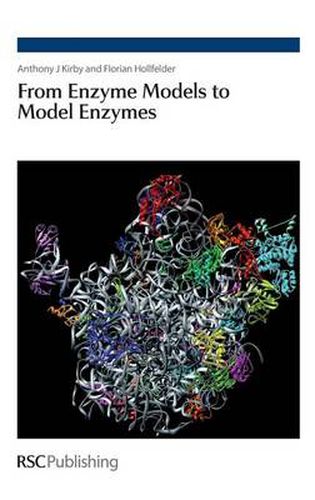Readings Newsletter
Become a Readings Member to make your shopping experience even easier.
Sign in or sign up for free!
You’re not far away from qualifying for FREE standard shipping within Australia
You’ve qualified for FREE standard shipping within Australia
The cart is loading…






Designing artificial systems with catalytic efficiencies to rival those of natural enzymes is one of the great challenges facing science today. Our current level of understanding fails the basic, practical test - designing and making artificial systems with catalytic efficiencies to rival those of natural enzymes. Chemists and bio-scientists are well aware of this problem, and artificial enzymes have been a hot topic for many years. However, until now, there has been no book devoted specifically to this subject. This is the first book to provide a critical introduction to, and overview of, this exciting area. It is aimed at students and more senior researchers with specialist or general interests in the field. The book starts with a systematic overview of the most important properties of natural enzymes, with special emphasis on mechanisms and efficiency of catalysis. This is followed by a summary of the mechanisms involved in the major classes of reaction they catalyze, and spells out the logical progression from simple mechanistic models for particular reactions to the first, rudimentary artificial enzymes catalyzing them. Catalytic efficiency is the key criterion for inclusion. An analysis of the strengths and limitations of the classical design-based approach to catalysis by enzyme mimics leads on to a discussion of recent advances which use selection methods coupled with iterative techniques for creating and improving catalysts by natural methods. The comparison of natural and artificial catalysts requires a quantitative understanding based on the interpretation of kinetic measurements. Key skills in data interpretation are introduced in a guided approach that connects the formal treatment of kinetic measurements with their chemical and biological interpretation.
$9.00 standard shipping within Australia
FREE standard shipping within Australia for orders over $100.00
Express & International shipping calculated at checkout
Designing artificial systems with catalytic efficiencies to rival those of natural enzymes is one of the great challenges facing science today. Our current level of understanding fails the basic, practical test - designing and making artificial systems with catalytic efficiencies to rival those of natural enzymes. Chemists and bio-scientists are well aware of this problem, and artificial enzymes have been a hot topic for many years. However, until now, there has been no book devoted specifically to this subject. This is the first book to provide a critical introduction to, and overview of, this exciting area. It is aimed at students and more senior researchers with specialist or general interests in the field. The book starts with a systematic overview of the most important properties of natural enzymes, with special emphasis on mechanisms and efficiency of catalysis. This is followed by a summary of the mechanisms involved in the major classes of reaction they catalyze, and spells out the logical progression from simple mechanistic models for particular reactions to the first, rudimentary artificial enzymes catalyzing them. Catalytic efficiency is the key criterion for inclusion. An analysis of the strengths and limitations of the classical design-based approach to catalysis by enzyme mimics leads on to a discussion of recent advances which use selection methods coupled with iterative techniques for creating and improving catalysts by natural methods. The comparison of natural and artificial catalysts requires a quantitative understanding based on the interpretation of kinetic measurements. Key skills in data interpretation are introduced in a guided approach that connects the formal treatment of kinetic measurements with their chemical and biological interpretation.